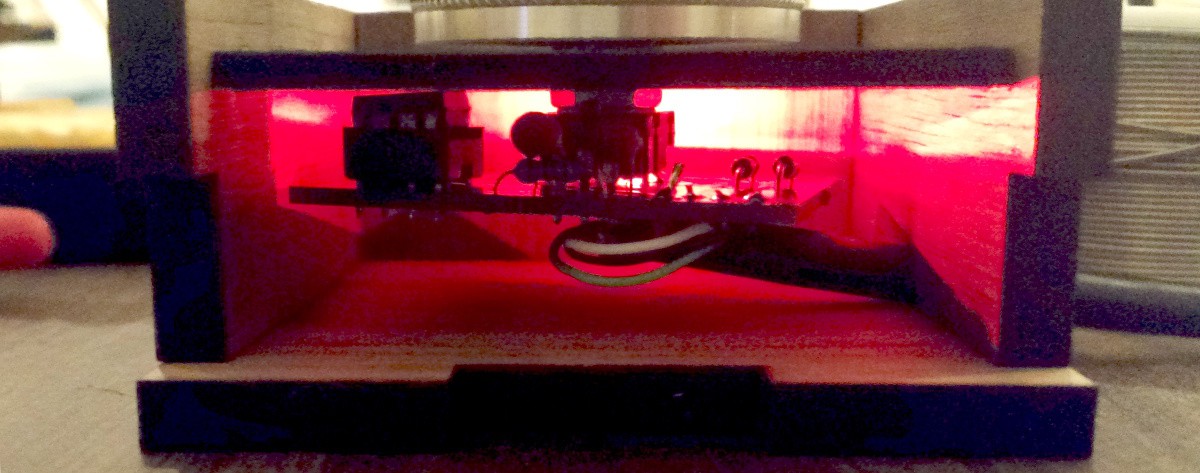Purpose
To create a useful input device with minimal hardware.
Process
I hope to write a tutorial at some point, for now an outline of the process:
- Designing the laser cut box in OpenSCAD, ordering from Ponoko
- Prototyping the circuit with an ATTiny85 on a breadboard
- Designing the ATTiny85 based circuit in Eagle, ordering from OSHPark
- Ordering rotary encoders and aluminum knobs from Amazon and AliExpress
- Assembling and debugging
tinyknob and megaknob
There are two classes of knobbox, named after the corresponding class of AVR micro. The ATTiny85 based tinyknob came first - a basic HID compliant device that acts as a two key keyboard. Having used all the pins on the ATTiny85, the megaknob bumps it up to a ATMega328P, allowing the use of a crystal, RGB LEDs, and the rotary encoder button.
Credits
Inspiration came largely from Rupert Hirst's uVolume USB volume knob.The tinyknob firmware is based off the V-USB EasyLogger example, and the megaknob firmware is based off tutorials from Code and Life.
The boxes were laser cut at Ponoko using walnut veneer MDF and acrylic.
 spro
spro


A great project!
How heavy would you say this device is?
I am a trombone player who regularly does solo studio work, and am looking for a solution to control my recording rig laptop from an onboard device.
Using the ATMega328p version is certainly a possibility!
As @Boris Bershadsky suggested a bluetooth version would be sweet, although I almost certain that some kind of companion software would be required to translate incoming data into a keyboard command as the device would be no longer able to be recognised as a HID device.
I suppose a 'dongle' containing a chip flashed with the HID firmware could receive the bluetooth data and convert it into native keyboard speak :)